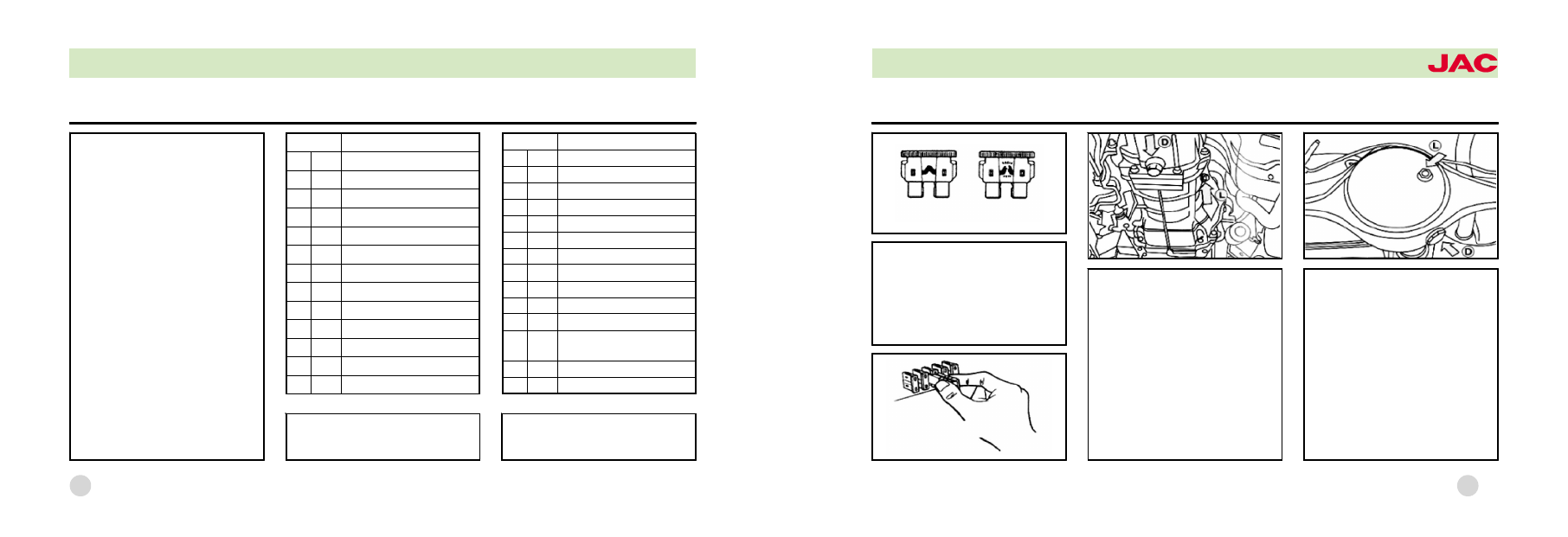JAC Pick-Up. Service manual - part 10

Fuse
In the figure above, the LH fuse
is operative and the RH is de鄄
fective. Use a fuse piler to re鄄
place the defective fuse with the
same sized one.
Lubrication
Replacing Gearbox Oil
Remove the drain plug under the
gearbox housing. Fill the speci鄄
fied oil into the gearbox through
the screw-plug hole. Stop filling
until oil overflows from the same
hole.
Replacing Main Reducer Oil
Remove the drain plug to dis鄄
charge gear oil from the rear
axle. Fill the specified gear oil in鄄
to the axle housing through the
screw-plug hole. Stop filling un鄄
til oil overflows from the same
hole.
4 -03
Ampere
Application
1
15A Headlamp
2
15A Headlamp
3
10A AC
4
20A Blower
5
10A AC Fan
6
10A Horn
7
10A Warning/Direction Lamp
8
10A Width Lamp
9
15A Front Fog Lamp
10 10A Rear Fog Lamp
11 20A Spare
12 15A Spare
13 10A Spare
Fuse
Fuse Box
The fuse boxes are fitted re鄄
spectively under the driver's in鄄
strument panel and at the right
of engine bay.
The cover can be simply re鄄
moved by a hand.
There are three spare fuses in
the box (20A, 15A and 10A).
* Use the same sized fuse for
replacement; otherwise it may
lead to a fire.
* If the spare fuse blows too, ex鄄
amine the circuit at the nearest
franchised JAC service provider
before it gets worsen.
Fuses in Engine Bay
Fuse Box (LH and Lower Posi鄄
tion of Instrument Panel)
Ampere
Application
1
15A Coil
2
Not Used
3
15A Receiver, Cigarette Lighter
4
10A Charging Indicator
5
Spare
6
Spare
7
Spare
8
10A Brake Lamp
9
10A Courtesy lamp
10 15A Central Lock
11
Not Used
12 15A
Wiper and Windscreen
Washing Device
13 10A Instrument Lamp
14 15A Reverse Lamp
4 -02
OWNER爷S MANUAL
pick-up